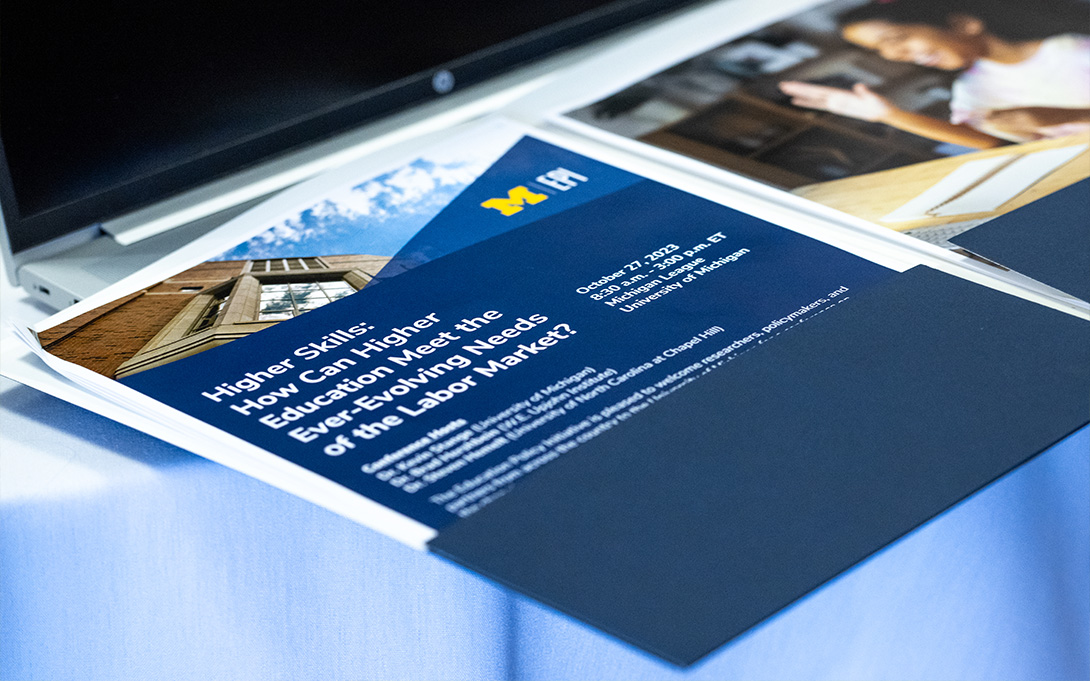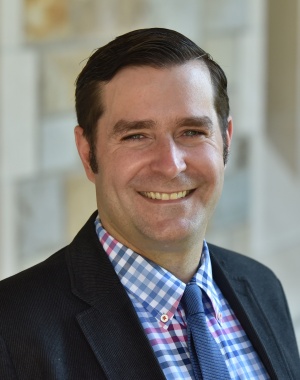
“Achieving the alignment of what’s needed and what students are learning has profound implications for our shared economic prosperity. The United States is undergoing a massive workforce restructuring. While college affordability is really important, it’s not everything. We need to make sure they are getting the right skills.”
With that bold statement, Dr. Kevin Stange opened the conference, “Higher Skills: How Can Higher Education Meet the Ever-Evolving Needs of the Labor Market”, convened on the University of Michigan campus with scholars and policymakers from across the state and across the country.
Stange, faculty co-director of the Education Policy Initiative (EPI), was noting the massive workforce restructuring under way in the United States. With that the conference addressed three key components:
- Looking back: Do postsecondary institutions respond to changes in the labor market?
- State of play: How are policy makers and practitioners using labor market information?
- Looking forward: New opportunities for measuring skills and workforce needs
The conference was co-hosted by Drs. Steven Hemelt (UNC Chapel Hill) and Brad Hershbein (W.E. Upjohn Institute).
The first session took a look backward at whether postsecondary institutions respond to changes in the labor market. Riley Acton (Miami University in Ohio) noted that even when total enrollment is going up at community colleges, students understand what is happening to their job prospects and are less likely to enter programs when related occupations have experienced layoffs.
Russell Weinstein (University of Illinois) said that shocks to the economy, like the 2000 dot-com bust, the fracking boom, or the 2008 financial crisis, very clearly affect what students study – in both negative and positive ways.
Andrew Simon (University of Chicago) showed how universities, especially the broad-access public institutions so critical to the state’s workforce, respond to changes in job ads which signal changes in the labor market.
Celeste Carruthers (University of Tennessee) said the data, which draws on many different contexts, should give us confidence in the replicability of the research, even as students and universities get more info from new sources.
The day’s second session looked at how policymakers and practitioners are using labor market information.
John Austin is currently a professor at U-M and spent 16 years on the Michigan State Board of Education. He noted there were conflicting forces: the zeal to free the life of the mind and protect freedom of inquiry, while at the same time acknowledging pressure to prepare people for specific occupations, or to be adaptable to be able to evolve as markets change.
Scott Powell, State of Michigan Chief Data Officer, said the data his team collects at the Michigan Center for Data and Analytics include traditional labor market information (LMI), real-time changes in employment, and administrative data. He said the administrative data in particular could be a guide to the future. And he called for ways to improve how policymakers and researchers can make use of the wealth of information.
Jennifer Lenahan-Cleary (Rutgers University) said that LMI could be informative, but aligning academic study with LMI was complex. Among other issues, stakeholders have competing interests, and change at larger 4-year institutions was more difficult than at 2-year colleges. She called for more collaboration to work with “more affordable, timely, accurate, and context-relevant LMI.”
Andrew Kelly (UNC Chapel Hill) said degree completers had their confidence shaken when they looked at the value proposition of higher education, especially among younger students. Is the return on investment worth it? North Carolina is leading the way in creating an infrastructure to answer this question rigorously.
Lenahan-Cleary responded that it was about more than simple ROI, when looking at achieving meaning and a life/work balance. “Data is not the only input. Career counselors need to be better at looking at the data and trends,” she noted.
Powell closed with a conundrum of governance. While he encouraged collaboration between government and academia, he said there needs to be an awareness of, “What is something the government can actually do? Maybe we can’t always do the things that research tells us we ‘should’ do.”
The last panel examined new opportunities for measuring skills and workforce needs.
Peter Blair (Harvard University) highlighted “three credentialing problems”: Growing pessimism of the value of a 4-year college degree; more jobs requiring 4-year degrees than people getting 4-year degrees; and other barriers, including occupational licensing, which is increasingly required.
He stressed a need to tap into workers without 4-year degrees, which he refers to as Skilled Through Alternative Routes (STARS) while also leveraging licensure as a pathway rather than a barrier .
Layla O'Kane (Lightcast) showed the power of big, population-level, data on job postings and worker profiles to identify skill matches in real-time. Graduates whose program is more aligned with the labor market are much less likely to be underemployed. Clearly there is room for many programs to better tailor their curriculum to the skills their students have when they leave.
Sarah Bana (Chapman University) spoke about innovative ways to measure skills from syllabi, and be able to compare them in a more open access manner. How can the skills being taught be characterized? How can that data be aligned with the data collected by the U.S. Department of Labor and its skills needs assessments? Finally, she wondered if Minority Serving Institutions (MSIs) were teaching different bundles of skills than Ivy League institutions?
The conference’s look at the past, present, and future of how higher education can meet the needs of labor market changes asked more questions than it answered, and gave the dozens of participants fodder for future collaborations.
Stange summarized, “The evidence and discussion painted such a rich picture of what dynamic and innovative organizations postsecondary institutions are. The needs of students and the workforce are rapidly shifting and it is encouraging how much colleges use this to adapt.”

